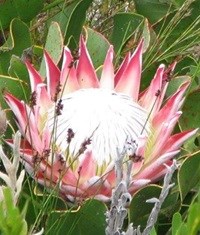
Top stories


EducationFrom adversity to opportunity: African education’s revival strategies
Sanjeev Mansotra 1 day



Marketing & MediaThe Odd Number named Financial Mail AdFocus Mid-Sized Agency of the Year
The Odd Number 2 days

More news












The IUCN (International Union for Conservation of Nature) received a nomination in March last year to double the existing World Heritage site. The current site is 557,584 hectares and includes Table Mountain National Park, Agulhas complex, Langeberg complex and the Garden Route complex. If approved, the extended site will include the Wilderness area, state forests and mountain catchment areas which form a chunk of the GRNP.
According to Jill Bunding-Venter, general manager of the Garden Route National Park, 'at least 119 recognised Fynbos vegetation types will be added to the existing site of both endemic and/or threatened Fynbos species.'
'International Biodiversity Day is celebrated every year to raise awareness about biodiversity. This year's theme is 'biodiversity and sustainable development.'
'Biodiversity' really refers to life. This can refer to genetic variation, species variation, or ecosystem variation within an area.
The Cape Floral Kingdom (CFK) is one of six globally recognised plant kingdoms and occurs in South Africa in the Western Cape Province extending eastwards into the Eastern Cape Province. The Cape Floral Kingdom is the smallest of all six kingdoms and is rich in biodiversity - 8,700 plant species, and high endemism, 68% of its plant species are confined to this kingdom 90,000 km2 large.
The CFK consists of the five biomes namely: fynbos, renosterveld, succulent karoo, sub-tropical thicket and afromontane forest. Fynbos is the dominant vegetation of the CFK as 80 percent of the CFK consists of fynbos.
The megadiverse countries are a group of countries that harbor the majority of the Earth's species and are therefore considered extremely biodiverse. Conservation International identified 17 megadiverse countries in 1998. All are located in, or partially in, tropical or subtropical regions. South Africa is ranked third after Brazil and Indonesia in terms of plant diversity.